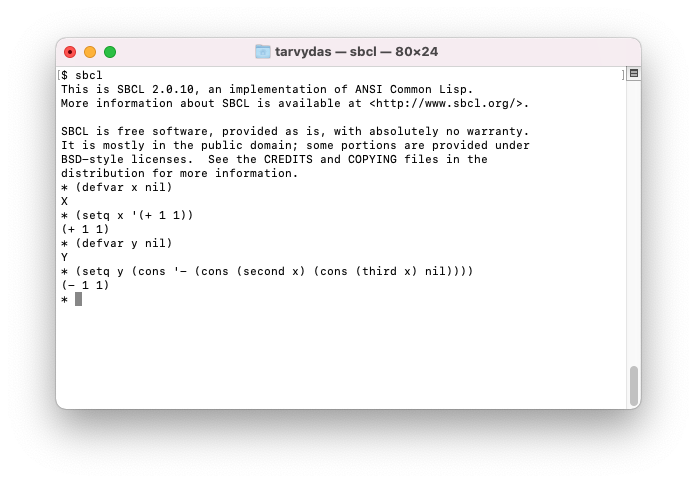Lisp
Lisp
Lisp is an expression language. Every statement returns a value.
Lisp is machine-readable.
Lisp’s RPN notation is a tree notation.
Lisp is programmed using parse trees (often called ASTs and CSTs1).
I would argue that Lisp has no syntax.
Lisp represents programs as Lists (not characters).This feature makes it especially easy to write REPLs for Lisp in Lisp, since Lisp contains many features for editing Lists. This feature is called homoiconicity.
Lisp sexps are much like triples.
The Lisp language contains many features aimed at debugging, for example restarts, the break statement, etc.
Lisp macros are List-manipulation functions that produce source code (lists) that are fed into the Lisp compiler.
Common Lisp
Common Lisp is a standard and was created as the union of several popular Lisps.
Racket
Racket is a variant of Lisp (based on Scheme, itself a variant of Lisp) that provides an IDE and various syntaxes (#lang).
Example - Editing A Program
A simple and meaningless example of editing a program.
Changing 1+1 to 1-1.

[Obviously, the rewriting operation is verbose. Lispers use a different syntactic sugaring for doing such rewrites.]
See Also
-
AST means Abstract Syntax Tree. CST means Concrete Syntax Tree. A grammar defines an AST. A parser produces a CST. ↩